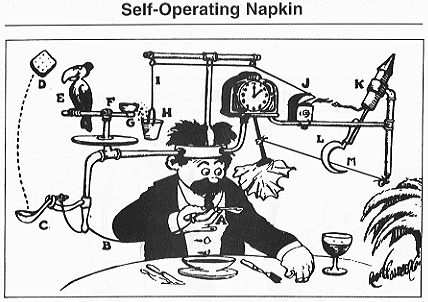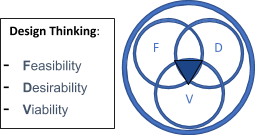Taivara Blog Post by Kevin Dwinnell
Ideation: Anatomy of a New Product Idea

Getting New Product Ideas Flowing
If you’re truly starting from a desire to create something new, but don’t have a good idea yet, here’s how you can jump-start that process.
Sources
First, don’t ignore the ideas that are already alive within your organization. That grumbling you hear in the nearby cubes isn’t always about the empty pot of coffee. It’s often the recurring points of frustration that are ripe for a solution.
- Organic – For some organizations, continuous improvement is a core part of the business. This creates a steady flow of ideas that can be incremental improvements to existing process but also an idea substantial enough to spin off on its own.
- Solicited – Our brains love a puzzle. A specific challenge to your organization for ideas to solve a particular problem can often lead to real insights. Put your existing power into play.
- Internal – Direct conversations with your internal staff can also break free significant problems worth solving. If you have teams close to customers, working in the field, using your product everyday – they’ll often be a great source for early indicators of where existing products are missing the mark.
- External – Conversations with customers will also reveal new ideas. One of our clients used customer site visits to carve out discussion time about what’s creating friction in their business. That became a treasure trove of new ideas, with built in first customers!
In the broadest sense, we’re talking about open innovation. It’s an admission we never know where the best ideas will surface, so we remain curious. As product managers or entrepreneurs, curiosity will ensure we always have a plan B. I often get derailed by the obstacles and can jump to the conclusion that something new is a bad idea. Because of that, I really respect a friend who has the ability to say “That’s interesting! How did you come to believe that?” regardless of how crazy something sounds.
Genuine interest. It continues the conversation and creates a dialogue for greater understanding – vitally important when planning for our product and engaging with its potential customers.
WATCHOUTS: Respond to all ideas. Many companies have a method to solicit ideas, but they go to a central repository and never get acted upon and the submitter never gets any feedback – good, bad or indifferent. Acknowledgment goes a long way to show you care about the associates, you value their input and gave it consideration – whether or not it’s pursued.
Keep egos out of this. Good ideas often look bad. If there’s a believer, give them room to run with an idea – even if it’s limited to their own time.
Storming New Product Ideas
Sometimes you don’t have the luxury of time when searching for your next big thing. If you have an immediate problem to solve, we’ve found that bringing a cross-functional team together to tackle the problem head-on yields positive results fast.
Painstorming
One of my father’s sayings was “It sure will feel good when it stops hurting.” That feeling of “good” is what we’re striving for when we develop a new product idea, and it’s not going to be there if there is no pain. We are creatures of habit and our resistance to change is significant. Creating a product that doesn’t easily demonstrate a material benefit (e.g. 10x better than what they’re doing today) will not get enough adoption to succeed.
I love the term “painstorming.” It easily explains the starting point for any good product. It’s a concept outlined in The Innovator’s Method and maps the customer journey/jobs to be done, identifies pain points, performs root cause analysis (5 Whys) and outline assumptions underlying key problems. Once the pains are identified, the team develops countermeasures to the customer’s pains.
WATCHOUTS: Avoid inserting your own beliefs instead of those observed in your customers. You really don’t want to shortcut the customer journey and fully understanding it.

Brainstorming
Brainstorming is a concept generally known. It’s a time for non-critical, free-flow sharing of ideas. It’s great for a high volume of ideas, in a short amount of time, that can then be narrowed down to more practical solutions. We’ve found a few methods to be consistently helpful with the teams we work with:
- Blue Sky – Creative ideas are encourage without constraints, don’t let beliefs or even current technology limit you. It requires positive emotion and a willingness to value all contributions.
- Creative Excursions – When you are up against a roadblock or need a breakthrough, creative excursions attempt to relax our strong internal censoring device. It temporarily puts the problem out of mind and generates irrelevant material. The output is often a completely novel idea.
- Wargaming – Wargaming seeks a robust, flexible strategies that enable your product to anticipate and outmaneuver competitive, or other, threats that can have devastating consequences.
Also, group performance gets worse as group size increases, so keep your group to 6 – 10 people.
The Sweet Spot for New Product Ideas
If no one cares, and cares deeply, about our product and the problem it solves – there’s a small chance they will ever take action to use it. Which is why we’re proponents of Design Thinking (DT). DT brings intense focus on the customer and their jobs to be done. It does so by rolling up three distinct concepts: Feasibility, Viability and Desirability.
Feasibility: Can it be done? Many times this a technology question, but could be a resource constraint (e.g. rare materials), a legal restriction or any number of blockers. If you find a real blocker, you can stop here or you may have identified the first item needing resolution. If it’s against the law, are the laws changing in your favor? A few years ago, cannabis was a black-market business. Now, it’s big business.
Desirability: Do people want it? Understanding desirability involves talking to customers, in their language/words and seeing how passionate they are about your proposal. Indifference is not a good sign for your product and a current solution that is “good enough” frequently is enough to block adoption of a better alternative.
Viability: Is there a big enough market to pay for the effort and do the economics work? If it costs me $10 to sell each product for $1, it’s not a business. It’s a money pit. (No, you won’t make it up in volume.) Likewise, if there’s only a few customers for my product, I may not have the volume needed to build a sustainable business.
Finding the point where all three come together is the goal of DT – and the sweet spot for your new product idea. we’ll get there eventually.

Modeling the Product Idea
Now we want to take the ideas that are typically in a very raw form, where much can be misunderstood or not yet considered, and start addressing high-level DT issue. Whether or not you are the idea owner, working through the following steps will help document essential information. This more complete picture will aid in gaining support, defining next steps and proving the idea has merit – to help move it from idea to product.
Feasibility
- Are we, as a company, able to provide the solution?
Desirability
- What is known about the problem? The best ideas solve a real customer problem.
- If you’re not the product owner, look for the questions not yet asked in exploring the idea. These will surface in statements that start like “I believe…” or “I think…”
- What is known about the customers of the new product?
- What are customers doing and how do they do it to address the issue today?
- How much is spent on current solutions?
- Do they do nothing? (Frequently a big competitor.)
- Do they consider it a problem or know addressing it is even possible?
- How many customers experience this problem?
- How does the solution make their lives better?
Viability
- How much is spent on this product category each year?
- Why hasn’t it existed yet?
- Why should it exist now?
- What is the idea’s competitive advantage or unique value proposition?
This is essential upfront information about the problem and solution. There are other things you’ll want to get perspective on. Don’t worry about going too deep, we’ll get into the details later. We do, however, want a high-level understanding at this point.
- Who or what is the competition?
- Who are the purchasers?
- Often encountered in enterprise sales where the purchaser is different from the user. The purchaser is the customer before the actual end user is.
- What’s the buying cycle/workflow/user flow?
- This will help define your early versions of the product and illustrate how long before you can generate revenue.
- Try to understand the assumptions that fill out the idea more completely
- What do they know? Note: This is usually based on category expertise. It may be spot on, or it could be very dated. Reserve some skepticism regardless of how strong the conviction around the “knowns.”
- What do they really know? If the information they are using is current, it can probably be trusted for now.
- What do they think they know? These are the biggest leap-of-faith assumptions.
- What questions are unanswered or what do they wish they knew? Or, what questions could be asked differently to get new information?
- We want to expand the data set to get more options or identify overlooked opportunities. For example, if a solution is designed for hotels, has the broader lodging industry been explored like Airbnb, VRBO, campgrounds or RV Parks?
Are there big jumps in next steps or what the idea owner thinks will happen?
- Called “leap of faith assumptions” big jumps should be broken into smaller assumptions that can be quickly tested.
Once you have an understanding of what an idea owner knows and have looked at, you can make guesses as to what was missed and wasn’t asked but should be. Once we’ve gone through our own assessment and confirmed understanding of the situation, what tests would we run to prove all the “assumptions & facts”?
WATCHOUTS: The main cost at this stage is time. A passionate idea owner will often go deeper right away, but this is where many ideas are put on ice. Limited time and resources.
Is the Product Idea Right for You?
By now, you’ll have a high number of good ideas to review. There is, however, a limit on resources and time – so you can’t do them all. When we have new ideas, we want to quickly assess them and determine if they are high enough of a priority to make the to-do list or shelved for future consideration.
Knowing that you’ll need to make a decision about what you’re pursuing and why, it’s really helpful to have a quick and dirty score sheet to use. It’ll put a quick perspective on whether there’s a fit or not. Whether the additional detail above is performed before or after your scoring can be determined by your own organization’s culture. The exercises above do provide better understanding of what the idea is and often proves helpful to scoring, but some companies simply kick out unclear ideas for further refinement.
Speed is important at this stage as the volume of ideas can be pretty high, and we want to respond to all submitted ideas. The scoring system we recommend is pretty straight forward. The outline below may be all you need. It can also be revised to include criteria unique or important to your organization. Make it work for you, just don’t go overboard – deeper dives will occur for approved ideas and with actual customers. And a good idea will resurface if it was submitted in a suboptimal way and dropped at this point.
Scoring:
- Strategic fit/alignment to the organization
- Level of effort, efficiency of execution and capabilities
- Impact to the organization or the bottom line
- Time to market, how fast can the work get done
- Probability of success
We find a cross-functional team, from core-business functions, can go through a list of ideas pretty quickly. If volume requires it, meet weekly. Otherwise, find the cadence that works best for your organization and stick to it.
WATCHOUTS: This is not meant to be a massive undertaking. Cross-functional teams using their combined experience can generally make a pretty good call.
Make sure results are captured and shared. Visibility as to the outcome and priority will ensure overlooked or misjudged ideas are brought back.
New Product Summary
By now, we have a pretty good idea of what we want to pursue, so roll it up.
- In one sentence what is the concept?
- How does the concept address the needs and goals of the customer?
- What message are you delivering to the target audience? Why do they care?
- What do you bring to the table that your competitors do not?
- What proof do you have that your product will be successful?
And get yourself ready to really test the value proposition of your new product idea.
Want help validating your idea?

Kevin Dwinnell
Practice Leader, Product Strategy & Commercialization
Kevin Dwinnell is the leader of Taivara’s Product Strategy & Commercialization practice. He helps companies dream up, design, & launch new offerings and create innovative new features for existing brands. You can reach Kevin at https://taivara.com/kevin
